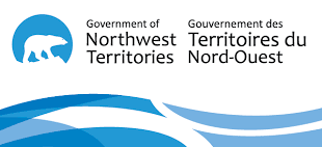Title: Coastal Labrador peatland permafrost inventory
Citation: Wang,Y., Way, R.G., Beer, J. 2023. Coastal Labrador peatland permafrost inventory, v. 1.2.0 (2023-2023). Nordicana D98, doi: 10.5885/45762XD-1DB498A49B864CFB.
Study Site: Coastal Labrador and adjacent parts of Quebec
Purpose: Northern peatlands cover approximately four million km², and about half of these peatlands are estimated to contain permafrost and periglacial landforms, like palsas and peat plateaus. Peatland permafrost environments are known to be sensitive to climate warming and ecosystem modifications, so understanding the distribution of these ice-rich landforms is important for predicting thermokarst potential, hydrological and vegetation change, and carbon cycling activities. We applied a multi-stage consensus-based approach to develop a first inventory of peatland permafrost complexes in Labrador, spanning from 51 to 61°N, with a focus on the area within 100 km of the Labrador Sea and Gulf of St. Lawrence coastline.
Abstract: A team of three mappers identified a total of 2092 prospective peatland permafrost complexes in coastal Labrador and adjacent parts of Quebec using high-resolution satellite imagery available via Esri ArcGIS Online (Maxar Vivid imagery, 0.5 m spatial resolution, 5 m spatial accuracy, imagery acquisition dates 2010-2020) (Esri, 2022). Each prospective peatland permafrost complex was subsequently reviewed by two of the three mappers into classes of likely, possible, and unlikely peatland permafrost complexes. Prospective complexes that were evaluated by both reviewers as containing peatland permafrost were classified as likely peatland permafrost complexes, while prospective complexes with conflicting evaluations were classified as possible peatland permafrost complexes. Interpretation of peatland permafrost presence or absence was supported by field and imagery-based validation efforts at 557 prospective peatland permafrost locations, 331 of which contained peatland permafrost. Out of 2092 initial wetland complexes, 1120 were interpreted as likely containing peatland permafrost, and 186 were interpreted as possibly containing peatland permafrost. Likely peatland permafrost complexes were mostly found in lowlands within 22 km of the coastline, in locations with corresponding mean annual air temperatures of up to +1.2 °C (1980-2010). These inventory results provide an important baseline for future mapping, modelling, and climate change adaptation strategy development for the region.
Supplemental Information Summary: Updated versions of the inventory will continue to be made available. Esri. (2023). World Imagery, https://www.arcgis.com/home/item.html?id=10df2279f9684e4a9f6a7f08febac2a9. Accessed from September 2020 to June 2023.
Research:
Further Info: Wang Y, Way RG, Beer J, Forget A, Tutton R, Purcell MC (2023). Significant underestimation of peatland permafrost along the Labrador Sea coastline in northern Canada. The Cryosphere, 17: 63-78. DOI: 10.5194/tc-17-63-2023.
Wang, Y, Way, RG, Beer, J, Forget, A, Tutton, R, and Purcell, MC. 2022. Significant underestimation of peatland permafrost along the Labrador Sea coastline [preprint]. The Cryosphere Discuss. DOI: 10.5194/tc-2022-38.
Status: Complete
Keywords:
mapping,
thermokarst,
Permafrost,
Geographical coordinates: North: 58.638370, South: 51.422931 East: -55.765940 West: -63.351862
Bounding Temporal Extent: Start Date: 2020-09-01, End
Date: 2023-06-30













